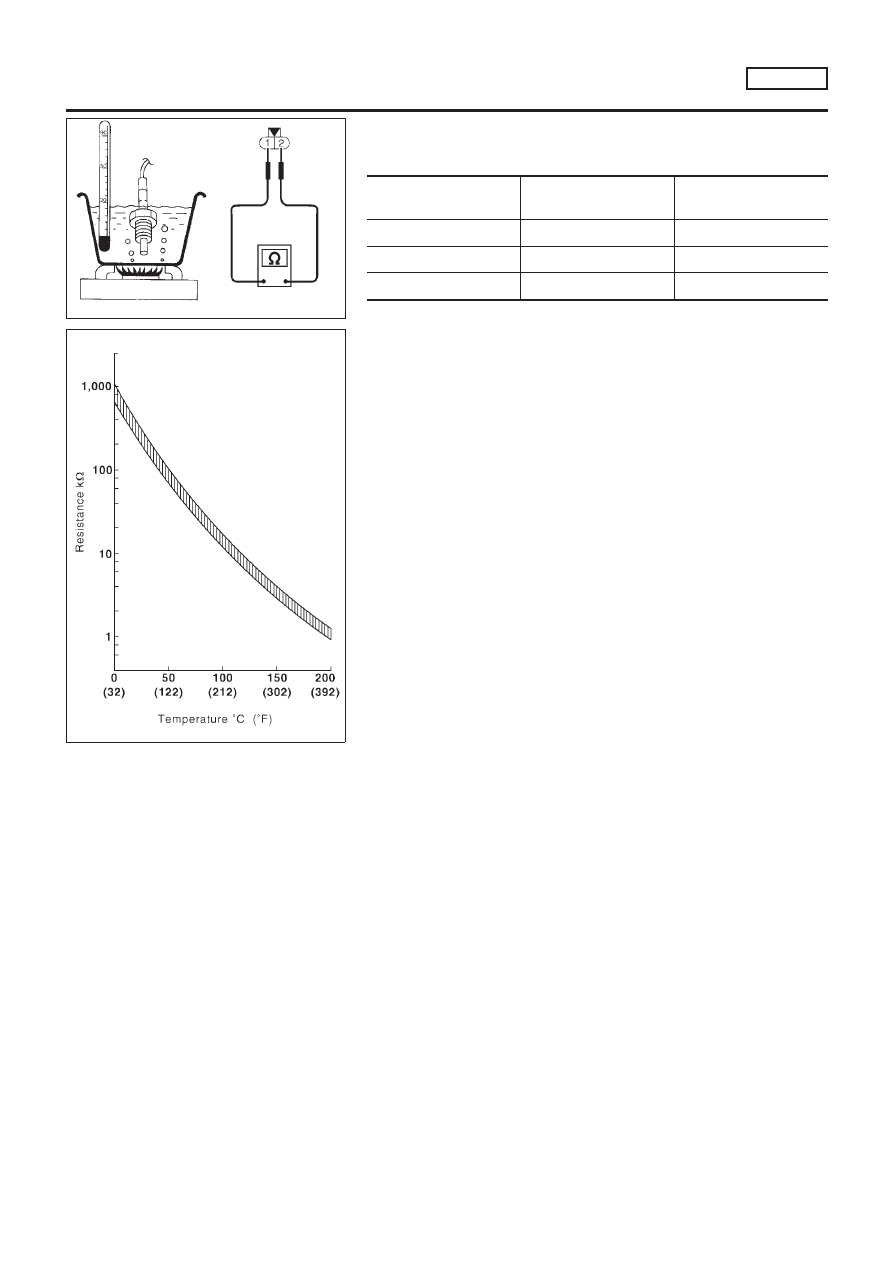Nissan Almera Tino V10 (2001 year). Manual - part 56

SEF611Y
SEF068XA
EGR TEMPERATURE SENSOR
NLEC1295S07
Check resistance change and resistance value.
<Reference data>
EGR temperature
°C (°F)
Voltage
V
Resistance
M
Ω
0 (32)
4.56
0.62 - 1.05
50 (122)
2.25
0.065 - 0.094
100 (212)
0.59
0.011 - 0.015
If NG, replace EGR temperature sensor.
EGR VOLUME CONTROL SYSTEM (WHERE FITTED)
QG18DE
Component Inspection (Cont’d)
EC-457